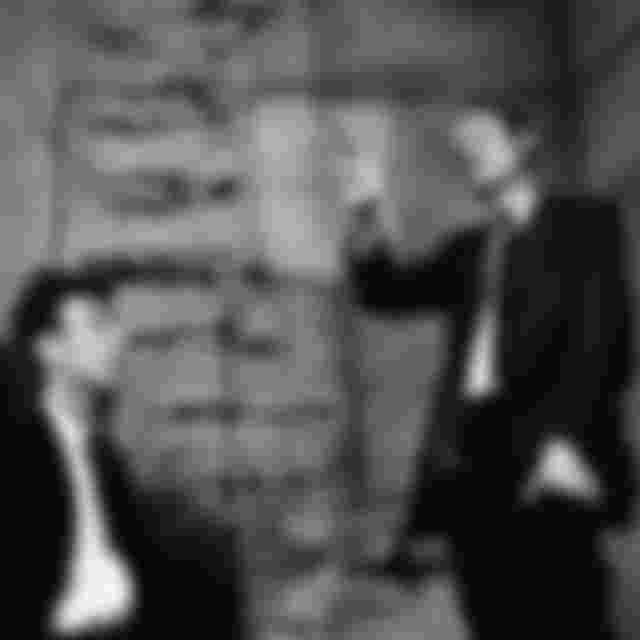"We have discovered the secret of life!" explained researcher Francis Crick to a group of colleagues at Cambridge University in 1953.

He and his collaborator James Watson have done a job that has won them great recognition in the scientific world. Did they really discovered the secret of life? Why was he really excited?
They built a model to explain how a molecule of DNA (deoxyribonucleic acid) works in its direction to build the body. His model was a "ladder" or a stair-shaped structure in the form of a double spiral.Schematically, it represented the function of the DNA molecule as a fundamental factor governing the interaction between other chemicals in the cells of living things. This DNA molecule is believed to play an important role in passing down inherited traits from parents to their children.
DNA is mainly found in the cell nucleus. Along its ladder structure, DNA contains "genes". A gene is a part or part of a DNA molecule that has to do with controlling the construction of a specific inherited trait, such as the color of the skin or eyes, the shape of a facial feature, a personality stage, etc. .
The model built by Watson and Crick represents the DNA molecule made up of two chemical strands coiled in a spiral around each other. Between the two wires or "handrails" in the "stairs" or "stairs", there are "steps" or "steps". Each "step" consists of two complementary chemicals. These chemicals are bonded in the middle of the "phases" of a weak hydrogen bond. Therefore, one strand is a mirror image of the other.
How DNA Controls the Construction of Body Parts
Suppose that in a living being it is necessary to build a protein molecule (an important building block). What happens? First, the body (animal or plant) somehow communicates to a cell in the body its need for a specific protein. In response to the call, the appropriate part of the cell's DNA "ladder" is opened or broken in the middle of its "rung". Half of the ladder-shaped part differs from the other half as an open hinge, so this section (and only this section) of the long DNA molecule is now like a half-ladder.
This condition is only temporary, as a wire's "middle passage" immediately begins to attract its complementary chemicals from the material surrounding the core. In this way, the other halves of the "steps" "rebuild" and thus form a new band called "messenger RNA" (ribonucleic acid). It bears this name because it has to leave the cell nucleus to carry the DNA matrix in order to make the appropriate protein.
Then the "messenger RNA" pulls away and the two original DNA strands in the nucleus come together as before, ready to send more "messenger RNA" if needed later. The RNA strip emerges from the nucleus, where a cell or particle body called a "ribosome" adheres to the strip and appears to "read" it, much like a tape recorder playing the words recorded on the tape. Appropriate chemicals are then provided to correspond to the "intermediate steps" of "messenger RNA".
What has been achieved so far? The "messenger RNA" actually carried the message or code of the DNA molecule so that the ribosome could "read" it and the chemicals were delivered in exactly the same way as the original DNA. As a result, “messenger RNA” uses another type of RNA called “transfer RNA” to collect chemicals called “amino acids” to make the specific protein needed. The protein is then released from the ribosome and continues to do its job as a building block.
In this complex manner, a protein molecule is synthesized with a DNA-directed chemical composition for use in a living body part. In another comparison, the process can be likened to a doctor (DNA) in his office (cell nucleus), writing a prescription and mailing it ("messenger RNA"). When the pharmacist (ribosome) reads it, he takes the prescribed chemicals from his shelf and retrieves them according to the prescription instructions. The drug (like protein) thus composed is used for certain purposes in the patient's body.
These things scientists have learned about these little things, some of which can not even be seen with a microscope. The discovery is proof of the incredible ability and capacity of the human mind. But do you think these scientists really discovered the "secret of life"?
Some unanswered questions
Before we marvel at the intelligence and research of these men, let's ask ourselves a few questions to see if the secrets of life have been fully discovered:
Exactly how does the body communicate its need to the cell and how does it get a part of the DNA molecule "unpacked" in the right place and then join? What prevents the rest of the DNA helix from "unpacking"? The answer to the last question may explain the unsolved problem of why, even though all cells in the body have the same chromosomes, only certain parts of them seem to function in different cells.
How did not only the right chemicals get into the cell but also all the right mechanisms, like ribosomes, to create a new strand of RNA? How does the ribosome "read" RNA and how exactly are the correct chemicals delivered to the right sites to mimic the DNA pattern and produce the right protein?
How is the information encoded in DNA transferred to cellular enzymes that control the growth of new cells? This, says Stanford University's Dr. Howard H. Pattee, is the area that still poses the most serious problems for biologists. It says that simple models (such as those developed by Watson and Crick) cannot explain the speed and reliability of information transfer. But a much more in-depth study of the substance at the submolecular level is necessary.
And finally, we find the most important question of all: how did these complex subjects and life itself get there? Researchers have no answers to these questions, only theories.
The living cell that does not come from unintelligent forces.
There is another issue that the reflector will take into account before genetics is credited with having a secret for creation, or even, that some would think we have creative power. Each "gene" (part of the DNA molecule) is thought to consist of a chain of about 1000 "nucleotides" (each nucleotide, which contains many atoms, is half a "rung" on the DNA steps). If a single gene is defective, the dead cell's ability to duplicate itself. Or, when the cell divides, the newly formed cell will be defective. How would cell growth or division occur if the thousands of parts that make up a single gene were brought together by chance, chance or "blind force", required by the theory of evolution? How much less fortunate when we say that there are tens of thousands of genes in DNA for every chromosome in a human cell!
Even in the simplest forms of life, the DNA chain remains extremely complex. For example, after twenty years of research, biologists have only mapped about one-third of the genes along the DNA helix in the "elemental" intestinal bacteria known as Escherichia coli.
If one with one's intelligence takes twenty years to map the composition of certain genes, how could the blind forces collect the necessary material, assemble it and make it work in such a complicated way? If its DNA strand was complete, say only three-quarters or nine-tenths, not a single animal could come to life. No, the creature had to appear whole, at once, at the same time or nothing. Requires creation and a Mastermind.

Good information